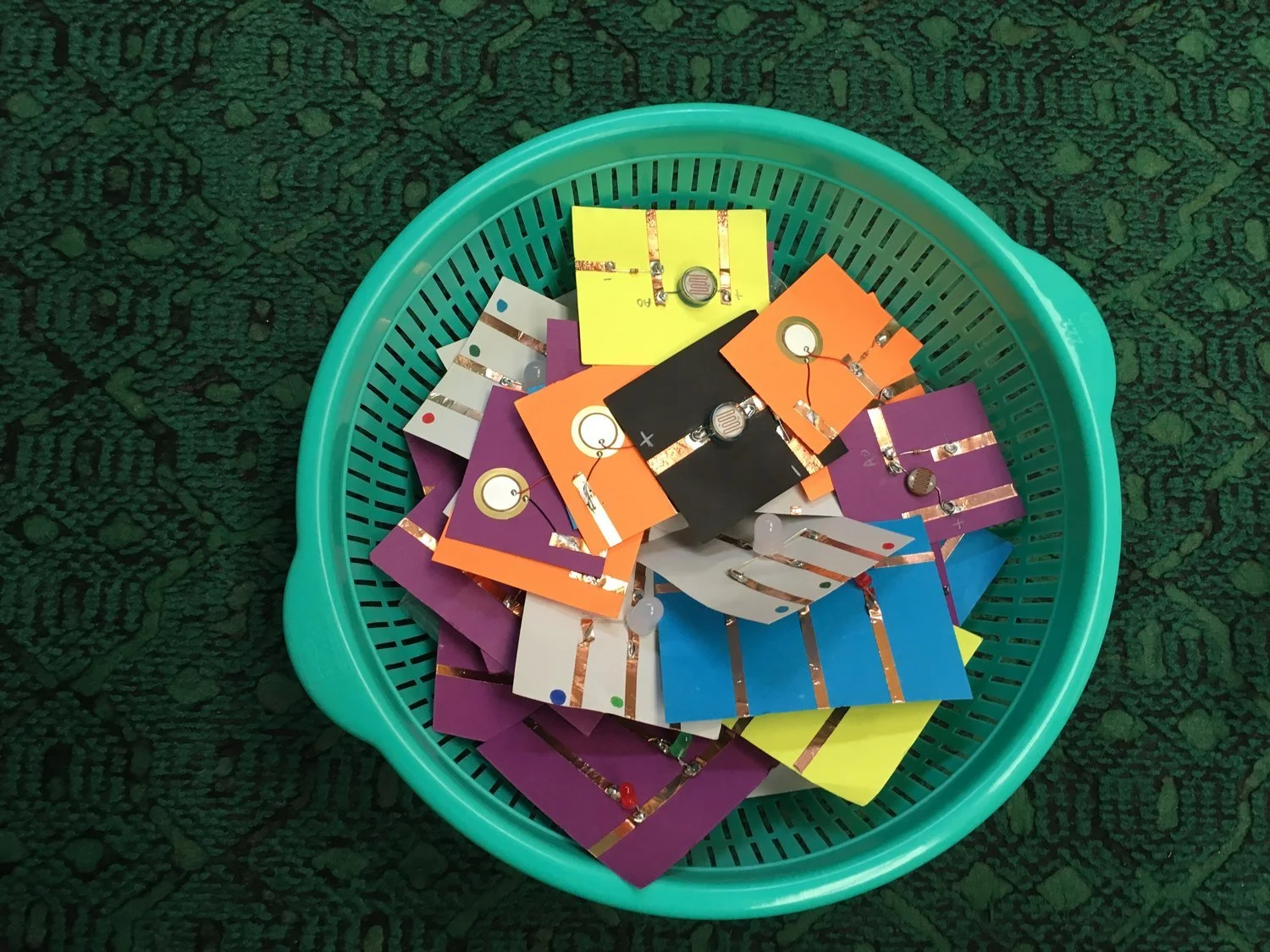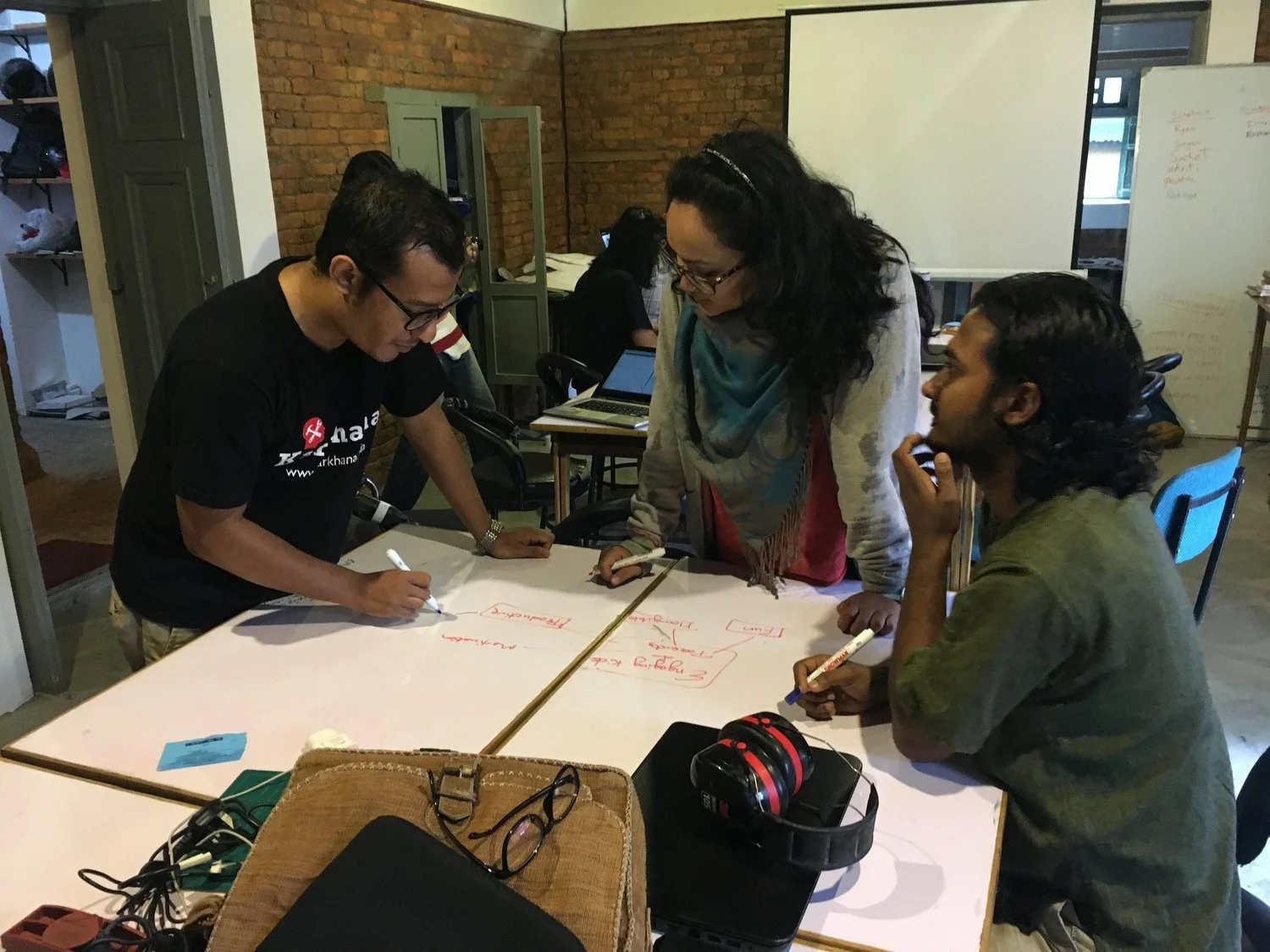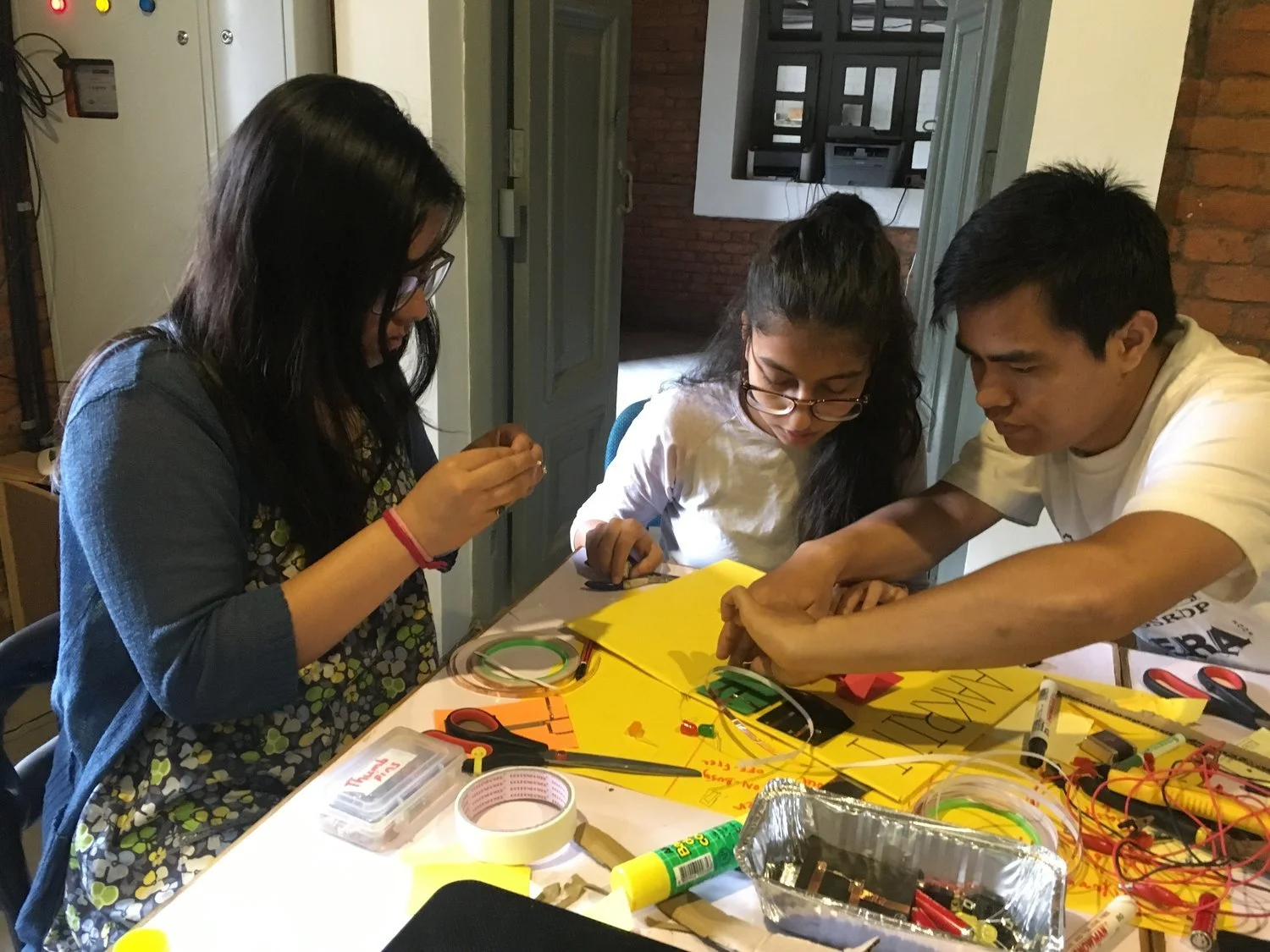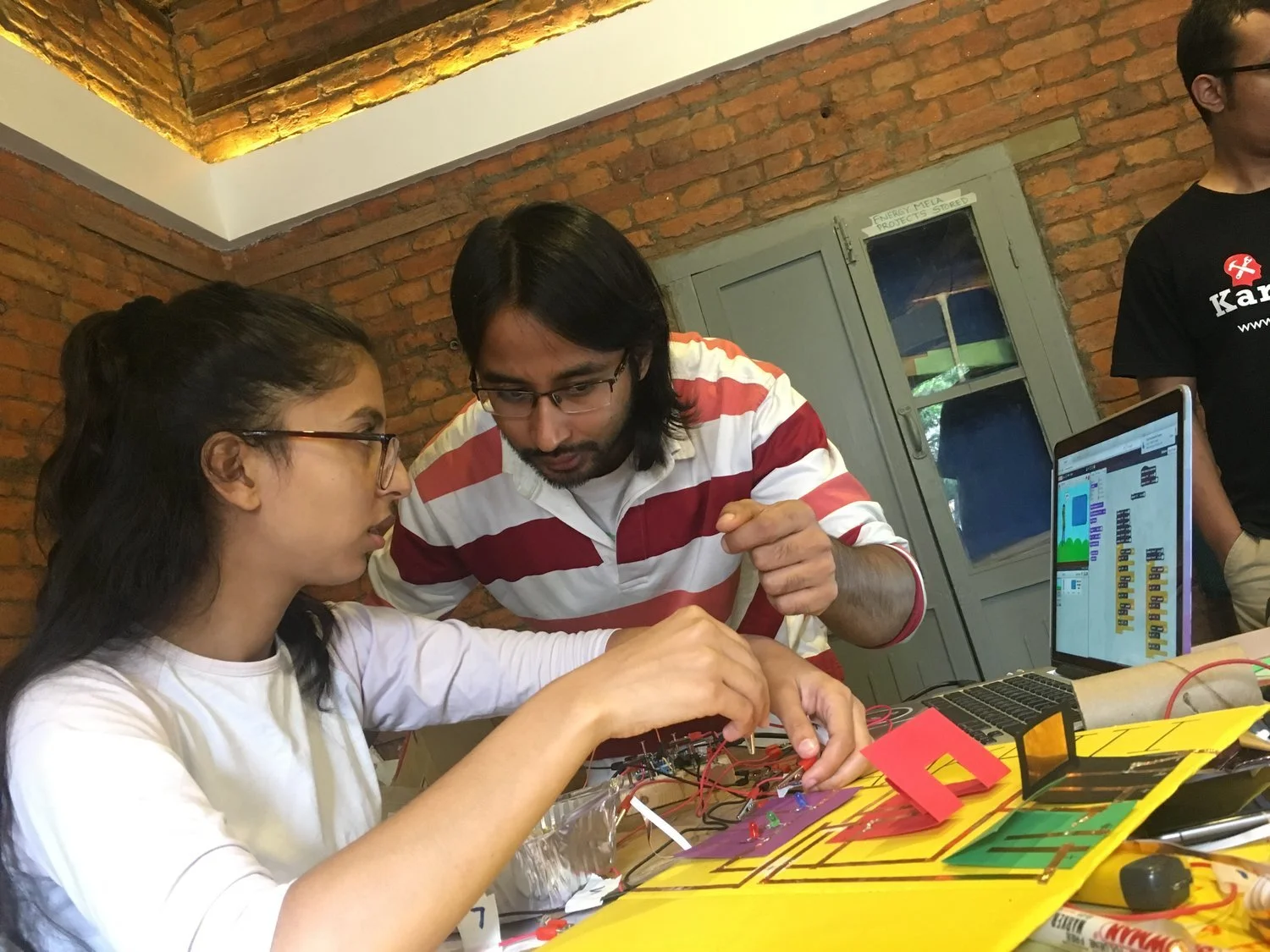Last weekend I attended the annual FabLearn conference at Stanford. On Saturday morning, Edith Ackerman, a long time collaborator and an amazing thinker around the topics of tinkering, teaching and learning gave the keynote address. The talk described many important ideas around environments and activities that support playful and mindful explorations. I was especially struck by her description of the difference between 'cognitive misers' always looking for confirmation of their beliefs and learners who can delight in the gap between their expectations and reality. Her discussion made me think of an interesting moment in the workshop with the team at the Karkhana makerspace in Kathmandu last month when we were playing with paper circuits and arduino.
We spent the second day of the workshop building paper circuits in the morning and experimenting with scratchpaper (programming paper circuits with scratchx arduino extension) in the afternoon. And on the third day we tried an experimental prompt to tie together our days of tinkering together, asking them to create site specific installations using the paper circuit elements.
One challenge that I had in the beginning of the session was that once the team split into three teams to work on their projects they immediately got deeply into brainstorming their projects. The group has a lot of experience with the TMPI (think, make, play, improve) design cycle for activities so they started with discussing, writing, and drawing out plans. While there's nothing wrong with this strategy, for a tinkering workshop, I thought that it would be more productive for them to work with the materials before going too far down a difficult path.
Akriti, Sagun, and Sunoj had a fun idea to try to create an interactive schedule and messaging board for their team. I liked how they integrated the individual scratchpaper circuits into a cohesive whole, but they spent a lot of time wiring up the entire circuit before testing the individual parts.
I observed Dipesh, who was helping me facilitating the workshop, trying to work with Sagun as she got increasingly frustrated with the parts not working as expected. As a novice to both arduino and programming, it was getting hard for her to make sense of all of the different possibilities.
After letting them work for a while I returned to her still being stuck so I thought that we could try to simplify the project and just focus on one of the components. Her goal was to have a switch trigger a light to leave a voicemail but nothing was happening when the circuit was completed.
One challenge with the scratchpaper set up and programming activities in general is that it's hard to tell if a problem is in the physical components, the electrical connection, or the program. We started to check the parts but we couldn't get it to work no matter what we tried. For a few minutes we just sat and talked to try and get our minds off the problem and after the little break we regrouped and thought that we could just try to get a switch to trigger a sound.
But it didn't work the way we expected, event when the switch wasn't connected the sound played. Even when we unplugged the arduino, the sound in the program still played. Something about the sound reminded me of the musical bench exhibit at the museum and instead of getting frustrated with the thing not working, we started playing around.
We found that we could turn off the sound by holding the alligator clips and taking our feet off the concrete floor. As well it seemed that we could complete the circuit by touching our hands together or forming a human chain. Although we didn't understand what was going on, we all started trying things out and explaining different theories to each other about what could be happening. We speculated that the floor or the building was actually creating some sort of electrical interference. The bug got turned into a feature and we ended up having a lot of fun playing with by changing the sounds and effects.
To me as a facilitator, it was an important lesson to trust in the tinkering process. When we were up against our prior expectations, hoping to merely confirm and complete a pre-exisiting plan, it was quite frustrating to continue and likely that we would stop. And we even did stop after a while. But once we started enjoying the process of not knowing we were able to start asking questions, thinking up hypotheses and quickly testing our ideas.
While in the moment it felt like magic, I want to try to unpack the ideas that Edith Ackerman outlined in her talk as a means of describing what happened. She talked about the different spaces that the tinkering workshop can embody, including a place for conversations, for observation, for play and for reflection. The fact that we had enough time for all these modes of interaction and a flexible work space where peers and facilitators could come in and out allowed for unexpected outcomes. The combination of mindfulness to simplify the situation and examine the problem along with the playfulness to have fun with and enjoy the surprising moments led to fun, whimsy, and the ability to be comfortable not knowing.



